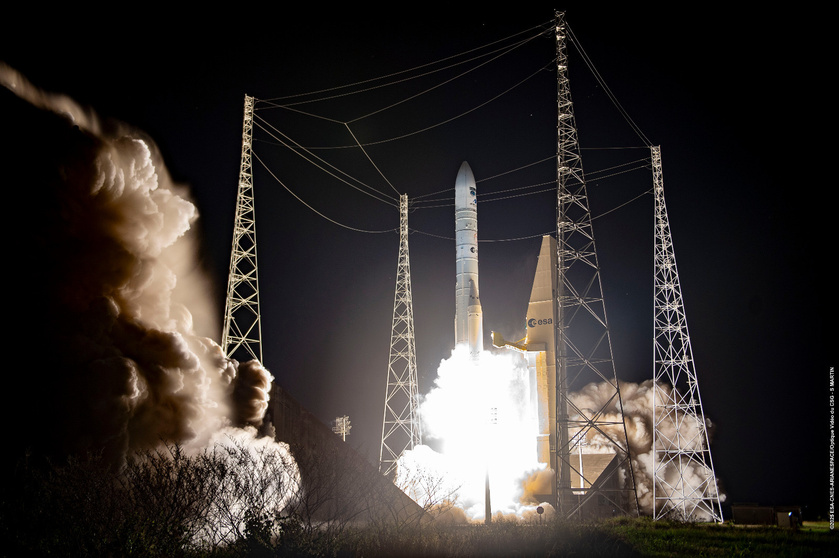Europe's heavy-lift Ariane 6 rocket launched the Metop-SGA1 weather and climate satellite into Sun-sychronous orbit on August 13, marking the rocket's third flight and second commercial mission. Liftoff occurred at 0037 UTC from the European Spaceport in Kourou, French Guiana.
This VA264 mission marked a significant step for the rocket, which serves as the successor to the retired Ariane 5. Operated by Arianespace on behalf of the European Space Agency (ESA), Ariane 6 is designed to ensure Europe’s independent access to space for a variety of payloads.
"#Ariane6 has successfully lifted off from Europe’s Spaceport, carrying the #MetopSGA1 satellite into orbit for @eumetsat, carrying 6 instruments, including Copernicus #Sentinel5 for atmospheric monitoring," Ariane Space wrote on X.
Metop-SGA1, weighing 4,040 kilograms), was deployed into a Sun-synchronous orbit at an altitude of approximately 800 kilometers above Earth, about 64 minutes after liftoff, Arianespace announced via X.
The satellite was built by Airbus Defence and Space, and developed for EUMETSAT, the European Organisation for the Exploitation of Meteorological Satellites. Metop-SGA1 is the first of six planned satellites in the Metop Second Generation (MetOp-SG) constellation, designed to ensure the continuity and enhancement of global meteorological data from space into the mid-2040s.
Following a checkout period, Metop-SGA1 will activate its six onboard instruments including the Copernicus Sentinel-5 atmospheric monitoring mission, which will provide daily global data on air pollutants, atmospheric trace gases, aerosols, and ultraviolet radiation.
These instruments are designed to measure parameters such as temperature, precipitation, clouds, winds, sea ice, aerosols, pollution, soil moisture, and volcanic dust. Metop-SGA1 is expected to operate for 7.5 years, delivering high-resolution data to improve weather forecasting and climate monitoring.
"The satellite will take global observation of weather and climate from a polar orbit to a new level, providing high-resolution observations of temperature, precipitation, clouds, winds, sea ice, aerosols, pollution, soil moisture, volcanic dust and a multitude of other parameters," Arianespace representatives wrote in a mission description.
Metop-SGA1 will deliver high-resolution observations of temperature, precipitation, clouds, winds, sea ice, soil moisture, volcanic dust, and other parameters, significantly enhancing weather forecasting accuracy and climate analysis compared to the previous MetOp mission
This launch was the 355th for Arianespace and the 21st meteorological satellite the company has launched for EUMETSAT.
The Ariane 6 rocket made its debut with a test flight in July 2024, proving its core capabilities. Its second flight, in March 2025, was its first commercial mission, successfully deploying a French spy satellite into Earth orbit. The third flight, which occurred on August 13, 2025, further demonstrated the rocket’s reliability and versatility in handling critical scientific payloads.
VA264 was Arianespace’s 355th mission overall and its 15th for EUMETSAT, as well as the 21st meteorological satellite it has launched. In addition to Ariane 6, Arianespace operates the smaller Vega C rocket, maintaining a diverse portfolio to meet various launch requirements.















